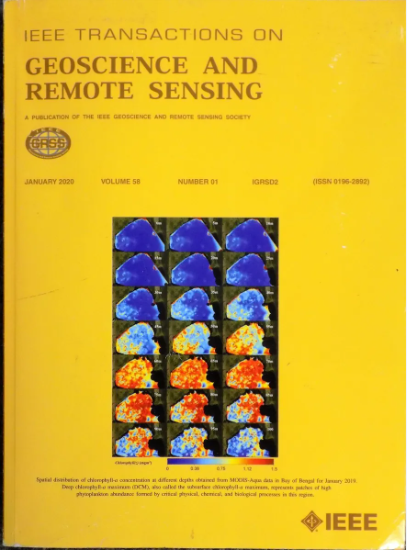Physics-Informed Self-Supervised Learning With Phase Resemblance Constraint for Internal Multiple Attenuation
IF 8.6
1区 地球科学
Q1 ENGINEERING, ELECTRICAL & ELECTRONIC
IEEE Transactions on Geoscience and Remote Sensing
Pub Date : 2024-09-17
DOI:10.1109/TGRS.2024.3462440
引用次数: 0
Abstract
Internal multiple attenuation is a kind of significant coherent noise for imaging and comprehending subsurface structures from primaries in exploration seismic data. Traditional prediction-subtraction strategy heavily relies on predicting the traveltimes and matching the amplitudes for internal multiples, which poses a risk of primary distortions. Neural network methods face challenges about missing primary labels, limited applications on prestack field data, and high demand for prior information and manual intervention. To alleviate these problems, this article develops a physics-informed self-supervised neural network (SSN) to attenuate internal multiples by reducing requirements for prior information and employing the phase resemblance (PR) as the physics loss to adaptively prevent primary distortions. First, the initial internal multiples (IIMs) predicted by the virtual event (VE) method are taken as inputs for SSN to provide prior information, where no authentic primaries are required for training labels. Then, a U-shaped SSN equipped with attention mechanisms and a pyramid dilated convolution (PDC) unit is constructed to map IIMs to the estimated true internal multiples (EIMs) under a physics-informed hybrid loss. We introduce the PR constraint as the physics loss by cross-coherence of traces and kurtosis calculation to adaptively prevent primary distortions and constrain the network training. The result without internal multiples is finally obtained by subtracting EIMs from the recorded data. Synthetic and field data examples demonstrate the superior performance of our method in internal multiple suppression and primary retention ability compared with traditional workflow and the purely data-driven neural network.带有相位相似性约束的物理信息自监督学习,用于内部多重衰减
在勘探地震数据中,内倍频衰减是一种重要的相干噪声,不利于通过初至成像和理解地下结构。传统的预测-抽取策略主要依赖于预测内倍频的行进时间和匹配振幅,这就带来了原初失真的风险。神经网络方法面临着原生层标签缺失、预叠加现场数据应用有限、对先验信息和人工干预要求高等挑战。为了缓解这些问题,本文开发了一种物理信息自监督神经网络(SSN),通过降低对先验信息的要求,并采用相位相似性(PR)作为物理损失来自适应地防止原生失真,从而衰减内部倍数。首先,虚拟事件(VE)方法预测的初始内部倍频(IIMs)被作为 SSN 的输入,以提供先验信息,其中不需要训练标签的真实基元。然后,构建一个配备注意力机制和金字塔扩张卷积(PDC)单元的 U 型 SSN,以便在物理信息混合损失下将 IIM 映射到估计的真实内部倍数(EIM)。我们通过轨迹交叉一致性和峰度计算引入 PR 约束作为物理损失,以适应性地防止原生失真并限制网络训练。通过从记录数据中减去 EIM,最终得到无内部倍数的结果。合成和现场数据实例表明,与传统工作流程和纯数据驱动的神经网络相比,我们的方法在内部多重抑制和原生保留能力方面表现出色。
本文章由计算机程序翻译,如有差异,请以英文原文为准。
求助全文
约1分钟内获得全文
求助全文
来源期刊

IEEE Transactions on Geoscience and Remote Sensing
工程技术-地球化学与地球物理
CiteScore
11.50
自引率
28.00%
发文量
1912
审稿时长
4.0 months
期刊介绍:
IEEE Transactions on Geoscience and Remote Sensing (TGRS) is a monthly publication that focuses on the theory, concepts, and techniques of science and engineering as applied to sensing the land, oceans, atmosphere, and space; and the processing, interpretation, and dissemination of this information.
 求助内容:
求助内容: 应助结果提醒方式:
应助结果提醒方式:


